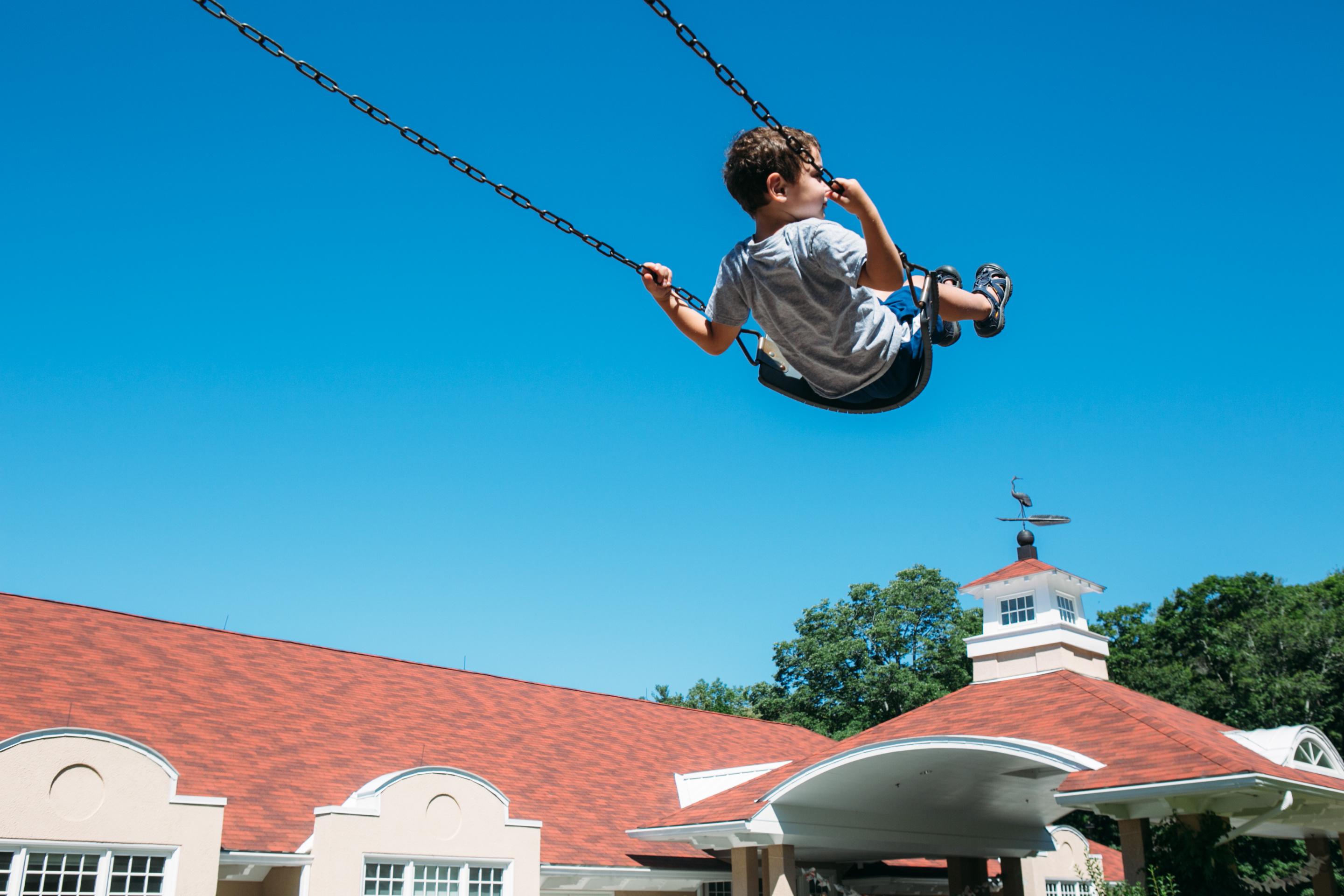Strategic Plan 2023



The vision for sustainability at Brookwood: What, Why, and How
Up Next
This document is the product of the Brookwood sustainability task force, established in April 2022 and including staff, administrators, trustees, and parents. The goal is to establish goals and key steps across a number of sustainabilityrelated initiatives to move Brookwood toward a more sustainable future in a way that resonates with the mission and purpose of the school.
WE ENVISION A BROOKWOOD THAT CONTRIBUTES TO ACHIEVING A SUSTAINABLE AND REGENERATIVE SOCIETY IN EVERY WAY POSSIBLE WITH A FOCUS ON EMPOWERING STUDENTS AND OUR COMMUNITY TO BE KNOWLEDGEABLE ABOUT THE IMPACTS OF ALL OF OUR ACTIONS AND INNOVATIVE IN IMPLEMENTING POSITIVE SOLUTIONS TO ADDRESS THE URGENT NEEDS OF OUR PLANET.
Brookwood School’s mission calls for it to foster a community of global citizens Part of being good citizens of the world is taking care of the planet so that it remains viable and life-supporting for all of its inhabitants Brookwood’s sustainability* strategic plan fits this mission by integrating sustainability into operations, facilities, and the student experience so that we can educate students on why and how to manage their impacts on the environment and walk the walk by managing Brookwood’s own impact.
In a world with scarce and limited resources, we need to be mindful of how our choices and actions affect resource availability for others and for future generations These resources include the clean air, water, and land that we enjoy today, as well as unrenewable energy and mineral resources There are decisions that we make everyday that have significant effects on the planet, natural habitats, and others’ ability to thrive. Learning to be aware of these impacts and the options that are available to us, as well as our advantaged position within global society, is part of being upstanding global citizens.
Brookwood’s sustainability strategic plan describes work that the school will undertake to execute on this vision To lead on sustainability, we must assess our own impact and identify areas in which we can reduce negative impacts This plan lays out the high-level goals for investigating the school’s environmental footprint related to its largest impact areas: energy sourcing & consumption, food sourcing & waste, non-food waste, purchasing, school grounds, transportation, and investing. The plan also identifies ways that sustainability will be integrated into classroom curricula and extra-curricular clubs and activities. Since the strength of sustainability efforts depends on the engagement of all community members, the plan also describes methods for community engagement, including how sustainability metrics and improvements will be reported, events and outreach to the community, and fundraising around sustainability investments The plan concludes with next steps that should be taken to put this plan into action
Throughout this work, the school will remain guided by its mission statement and the passion of all community members. This means first and foremost focusing on the education and empowerment of students To be successful, sustainability must become part of the mindset and decision frame of all stakeholders Overtime, we become more practiced in identifying and vetting alternatives and see that sustainability can be good for the planet, good for our community, and good for the financial sustainability of the school.
*Sustainability means meeting our needs in ways that don't undermine the ability of others around the world or future generations of meeting their needs For more discussion of the meaning of sustainability, please see The Natural Step https://thenaturalstep org/approach/the-system-conditions/
These guiding principles set the foundation for the goals and actions of Brookwood’s Sustainability Plan, and provide a guide for ongoing decisions and action. Every action included in this Plan was evaluated through the lens of these principles.
Environmental Justice, Equity and Inclusion
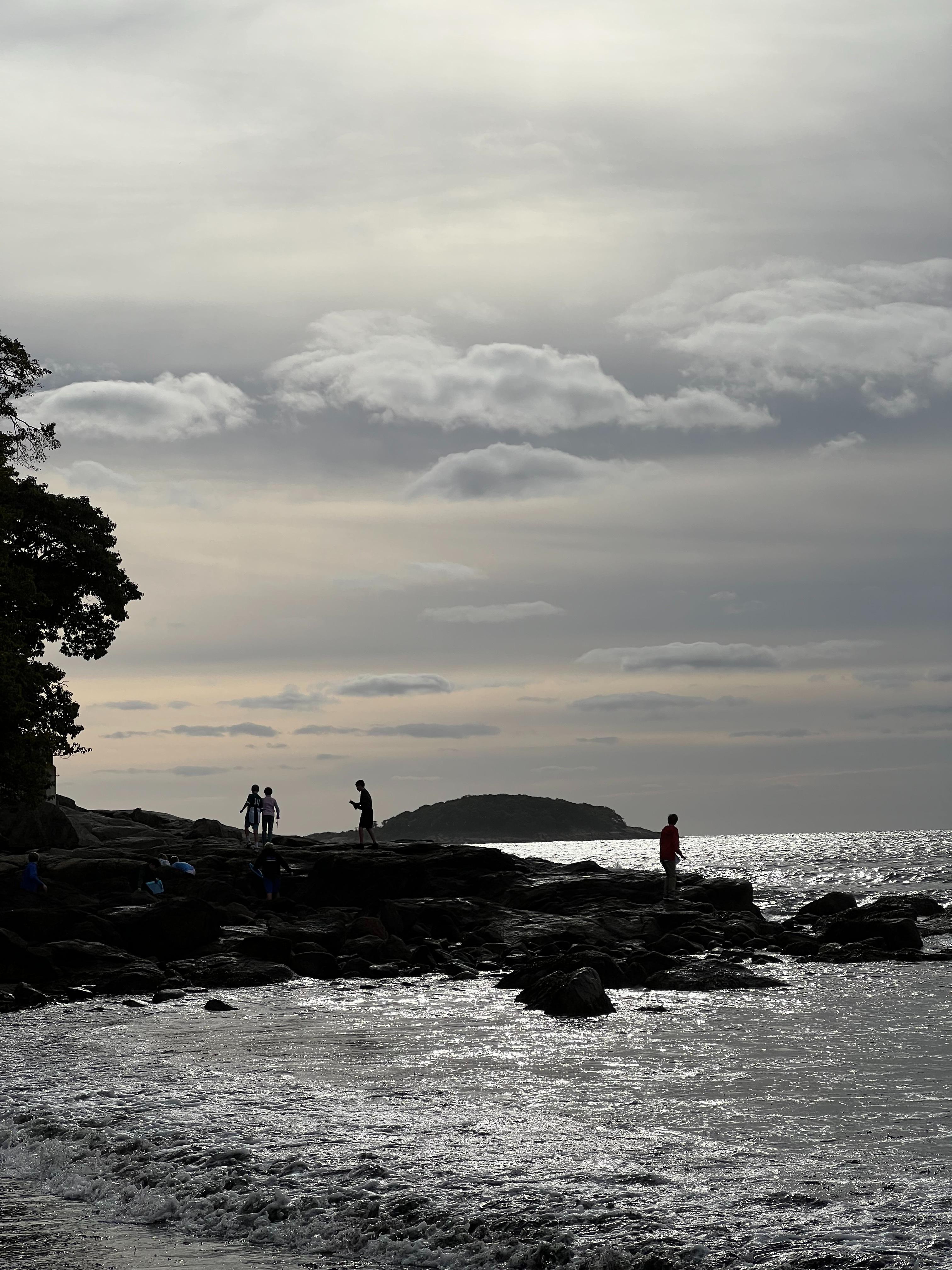
Our goal is a Brookwood that incorporates learning and teaching within the curriculum that addresses the knowledge and skills needed to foster an environmentally, socially, and economically sustainable future We envision a Brookwood that integrates sustainable operations practices within curricular and co-curricular programming, such as energy conservation competitions, waste and recycling audits, greenhouse gas inventories, and organic gardening and landscaping practices, among others
Brookwood already incorporates learning about natural systems, conservation, waste, and climate change into the academic curriculum at every grade level
A compilation of current curricular initiatives related to climate change and sustainability is listed in Appendix 2.
Enhance and leverage the current offerings by increasing awareness and collaboration across faculty members regarding what is being taught by their colleagues.
Leverage opportunities for cross-class and cross-grade collaboration and discussion of environmental topics.
Engage upper school students in the sustainability efforts of the school, e.g. through science projects, clubs, specific project assignments. Include discussions of environmental justice and equity in environmental impacts in curriculum, as appropriate.
Stepping Stones
Create opportunities for students to consider and realize the environmental impacts of everyday activities, making students aware of resource use and waste.
Use the opportunity of an annual celebration of sustainability at Brookwood (like Earth week or month) to highlight activities in the classroom and build awareness and coordination across faculty members. Identify a menu of possible sustainability-related themes and projects that could be shared with teachers and club leaders.
Include sustainability content in curriculum mapping efforts by school leadership.
Current status
Student environmental club has existed in the past but did not run during 2022-23 AY
Goals
Provide opportunities for interested students to learn more and take action related to sustainability at Brookwood and beyond Empower students to be part of the solution to environmental problems, including climate change, through learning and action opportunities –consistent with the Brookwood change making curriculum.
Stepping stones
Reinstitute, support and elevate student environmental club for upper school students.
Create an 8th grade leadership group for school-based sustainability. Explore the creation of a sustainability-specific cup / prize / award to recognize an 8th grade student at The Salute.
Develop a program of grade / class leaders who can help their peers with best practices (trash sorting, recycling, stewardship of nature, etc.).
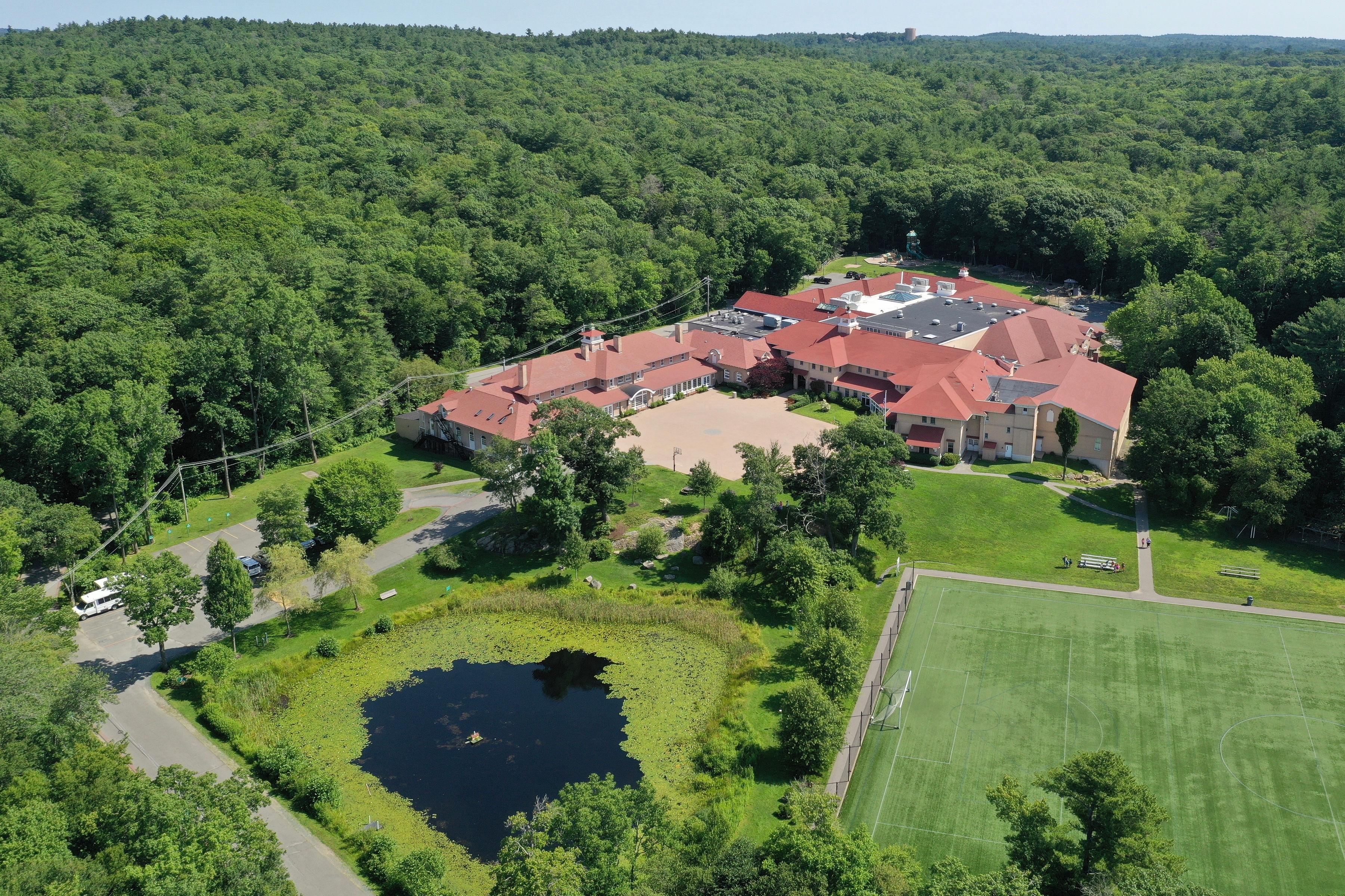
We envision a Brookwood that strives to incorporate best practice in sustainability in all aspects of facilities and operations, including new buildings and renovations, energy sourcing and consumption, waste management, water use, food services, landscaping, transportation, and purchasing
Current Status
During summer of 2022, the school replaced all lights with LED lighting, reducing our electricity usage for lighting by an estimated 79% This project was done with the support of a utility program providing 0% financing, meaning that the money saved will exceed our financial investment in 4 years
School has contracted with GreenerU to create a campus energy plan during the 2022-23 school year, identify solutions to our heating and cooling needs and develop a plan for how to replace the boilers / heating system components that are at end of life.
School is under contract with Energy621 for a solar energy project at the school that is expected to provide 96% of the school’s current electricity use. This will provide cost savings (relative to forecast electricity prices) and electricity price certainty over 25 years, as well as reducing the school’s greenhouse gas emissions. Target installation summer 2023, pending approval by National Grid.
Goals
Reduce the school’s scope 1 and 2 greenhouse gas emissions by 50% relative to 2019 by the year 2031 (the school’s 75th Anniversary), through increased energy efficiency, electrification, and renewable energy sourcing.
School will be “net-zero” by 2050, with at least an 85% reduction in total scope 1 and 2 greenhouse gas emissions.
Include energy-associated emissions impact in decision-making associated with scope 3 activities (such as purchasing and transportation).
Calculate the greenhouse gas emissions from scope 1 and 2 (see definitions in Appendix 1) as of 2019, based on historical data, and for the current year
Identify and document the emissions reductions associated with:
LED lighting project
Options for replacing heat system
Installation of solar energy production
Identify significant sources of scope 1 and 2 emissions that could be targets for reduction and regularly evaluate and update reduction goals. Evaluate which sources are the best targets in terms of cost effectiveness (emissions reduction per dollar investment), impact on community health and wellness, and consistency with school mission.
Create a plan for financing those investments - via fundraising, grants, incentives, capital expenditures. Partner with the business office, development office, and board of trustees as appropriate.
Current Status
Current Culinart contract specifically calls out local sourcing of food in the New England area.
Under the current contract, Culinart will be making a $10K, 5 year investment (FY22 - FY27) in Brookwood’s sustainability efforts. Composting program in place for weekly composting of kitchen food waste, in partnership with Black Earth Composting. Reducing food waste with proper quantity preparation and repurposing leftovers.
Goals
Where possible, source more food locally and from environmentallypreferred sources.
Increase student awareness about food waste (unfinished meals) and proper sorting of trash
Curriculum integration with food sourcing, where does food come from, the difference between processed and unprocessed food
Stepping Stones
Work with Culinart on defining their sustainability investment in the school.
Include regular reminders re: proper food sorting throughout the year, ideally delivered by students (environmental club, leadership team, or grade leaders).
Research the availability of more local food sourcing or the potential to partner with Tendercrop or other local sellers. Add sustainability criteria for purchasing and food waste to the next food supply contract.
Suggest food waste as a topic for student environmental club action. Reduce food waste at events by more accurately planning for event size, scaling back on foods provided when appropriate.
Experiment with weighing food waste (perhaps host an in-house competition) to promote education and awareness about food waste
Current Status
The school has recycling available for paper, glass, and plastic containers. For the food service, we use a combination of compostable items and reusable items; usage differs depending on the day and staffing and the event.
The school employs multi-year-use binders in the upper school to reduce waste.
Goals
Adopt and implement zero-waste practices for events on campus.
Eliminate single-use plastics on campus. Reduce printing and other use of paper.
Increase awareness and education to drive student & staff participation in recycling
Stepping Stones
Consider policies to reduce printing, potentially including print on demand or using codes for the copiers
Create and empower a sustainability-focused student leadership team –create contests, targets, initiatives for the school, report out at school meeting.
Create and regularly revise a sustainable events guide for reference in event planning, with advice on zero-waste events, waste reduction, sustainable sourcing, and prohibition of single-use, plastic items. (See Appendix 3 for draft zero waste events guide).
Provide guidelines to parents regarding waste reduction when food items are sent in for celebrations. (e.g. no single use plastics, use compostable plates and forks).
Current status
Brookwood is updating current purchasing policies to include language around sustainability initiatives / companies and support for minority owned businesses.
Goals
Purchase from 100% recycled paper and 80% of paper goods (e.g. tissues, toilet paper, etc.) from post-recycled sources.
For non-paper office supplies, purchase with a preference for better environmental qualities, such as recycled, low toxicity, recyclable and compostable.
Consider the impact of purchases on community health and wellness.
Stepping Stones
Add language to purchasing policy to mandate the consideration of sustainability characteristics (especially waste, re-use, and energy intensity) in RFP contracting Request information on sustainability from vendors as part of reviews or RFPs
Research whether suppliers (e g Staples) provide sustainablecharacteristic tracking for office supplies
Increase awareness among all internal budget-owners regarding purchasing guidelines, requesting purchasing preference for recyclable / recycled source materials and considering sustainability in all purchases. Require replacement appliances be “Energy-Star” rated.
Current status
Brookwood avoids fertilizer use to preserve the health of our surrounding wetlands.
Brookwood pursues minimal water usage in outdoor landscaping.
Goals
Maintain the wetlands and forest ecosystems in their natural state. Enhance opportunities for outdoor classroom / learning in the natural environment surrounding the school.
Stepping Stones
Select products for outdoor use that will not negatively impact the surrounding ecosystems
Design and create a new “forest school” area on the school campus, providing an improved outdoor area for flexible and dynamic learning immersed in a natural environment
Improve trails throughout campus for better access to nature areas and surrounding conservation land
Current status
Brookwood offers buses to reduce car traffic.
Goals
Increase community awareness about environmental impacts from transportation reducing idling in the carline.
Encourage carpooling and the use of buses to reduce traffic impacts. Increase and encourage electrification of vehicles.
Stepping Stones
Add signage to reduce idling in the carline.
Add environmental benefits of buses to marketing materials about bus transportation. Market buses as a greener alternative than single occupancy vehicle traffic.
Research the potential to add EV chargers for staff and visitor vehicles
As we replace BWD-owned vehicles, research and prioritize options to replace BWD-owned ICE vehicles with an all electric fleet
Current Status
The retirement plans offered to employees by Brookwood school offers two options for employees to invest their retirement funds in ESG related funds: The Social Choice Equity Fund and the CREF Social Choice index. Per the Board of Trustee’s Investment Policy Guidelines, endowment funds are invested in specific asset categories in a prescribed mix. There is no specific guidance regarding sustainability or ESG criteria for the investments.
Goals
Integrate mission-aligned sustainability goals into the Investment Policy Statement
Move endowment portfolio toward 100% mission-aligned, sustainable investing strategies to reduce risk, maximize returns and fulfill fiduciary duty to protect and grow endowment capital
Review funds in employee retirement plans (401k / 403b) and ensure there are sufficient sustainable / ESG investing options; consider sustainable target date fund for default option (QDIA)
Stepping Stones
Explore options for sustainable investing that meet the goals and objectives of the Endowment Investment Policy.
Provide board education and build consensus re: options for sustainable investing of endowment funds
Engage the broader field of sustainability investment, e,g, Intentional Endowments Network, as a resource and partner

Our goal is a Brookwood that communicates with stakeholders on its evolving commitment to sustainability in learning and practice
There is no consistent, comprehensive reporting of sustainability actions, goals, or planning at this time.
Goals
Increase community awareness about school initiatives, investments, and progress on sustainability.
Include sustainability in school-level strategic planning.
Maintain and update a Sustainability @ BWD strategic plan.
Include sustainability planning and progress in accreditation report to AISNE.
Be a national leader and role model for independent school sustainability.
Create an ongoing sustainability leadership team with membership including parents, trustees, employees, and student leaders to set annual sustainability goals and priorities, provide reporting and oversight of sustainability efforts, and update the sustainability plan
Add sustainability content to the school website, including stories and goals
Include sustainability goals in each department’s annual goals and assess goal performance annually
Provide an annual “sustainability update” to the school community, updating on progress and prioritizing efforts for the coming year Consider using GSA’s START framework for measuring and reporting. Research and consider joining national organizations such as the Green Schools Alliance and others.
Current status
Recent events and outreach have not highlighted sustainability activities at the school.
The 2022 pillars of strategic investment for the school identify sustainability as one of the focal areas.
Goals
Offer support for student and faculty engagement in sustainability-related programs and projects, such as field study projects, student/faculty exchanges, and partnerships with other schools, local governments, and organizations
Increase awareness in the community of sustainability efforts and investments at the school
Develop partnerships with other organizations and individuals in the local community to help facilitate and extend sustainability efforts
Stepping Stones
Make sustainability efforts more evident at community events (e g zero waste, reuse / recycle / reduce efforts, highlighting improvements, etc.)
Work with the communications department to add sustainability content to Brookwood’s website.
Annual celebration of sustainability at Brookwood (e.g. earth week or month). Include presentations at school meeting and other ways to highlight sustainability at the school.
Identify and connect with partners around sustainability efforts (e.g. other local independent and public schools, Green Beverly, Change is Simple) Coordinate with the PA to bring in alumni, parents, and other speakers working in the field of sustainability to talk with the kids, provide parent education, movie screening, etc.
Add sustainability-themed projects for steep-week in upper school, potentially partnering with parents and/or local organizations.
Current status
We have not recently embarked on any fundraising specifically in support of sustainability efforts at the school.
Goals
Provide the larger Brookwood community with a means by which to learn about and support the school’s sustainability efforts
Identify specific investments to support sustainability improvements that are appropriate for community financial support. Outreach to families with known interests in this space for potential support.
Highlight sustainability investment opportunities in the newsletter with annual fund solicitation and include sustainability as a funding option.
Incorporate sustainability in the next auction / fundraising event as a specific fundraising target.
Consider sustainability investments as a target for future capital campaign efforts.

While all of the stepping stones provide specific actions toward the school’s sustainability goals, the overarching progress of the school depends on the creation of institutional structures to continue the progress and accountability for achieving the goals outlined above. In particular, the Sustainability Task Force endorses the creation of the following:
An 8th grade student leadership group for sustainability @ BWD (with faculty leader)
An upper school sustainability club (with faculty leader)
An ongoing Sustainability Leadership Team with members including parents, trustees, employees, and student leaders to set measurable annual sustainability goals and priorities, provide reporting and oversight of sustainability efforts, and update the sustainability plan.
A Sustainability Coordinator position: A parttime position at the school, ideally held by a faculty member, to engage with faculty, staff, parents and students and sit on the Sustainability Leadership Team. This person could be the faculty sponsor for the leadership group and club indicated above, and would be instrumental in continuing the journey toward sustainability at Brookwood.
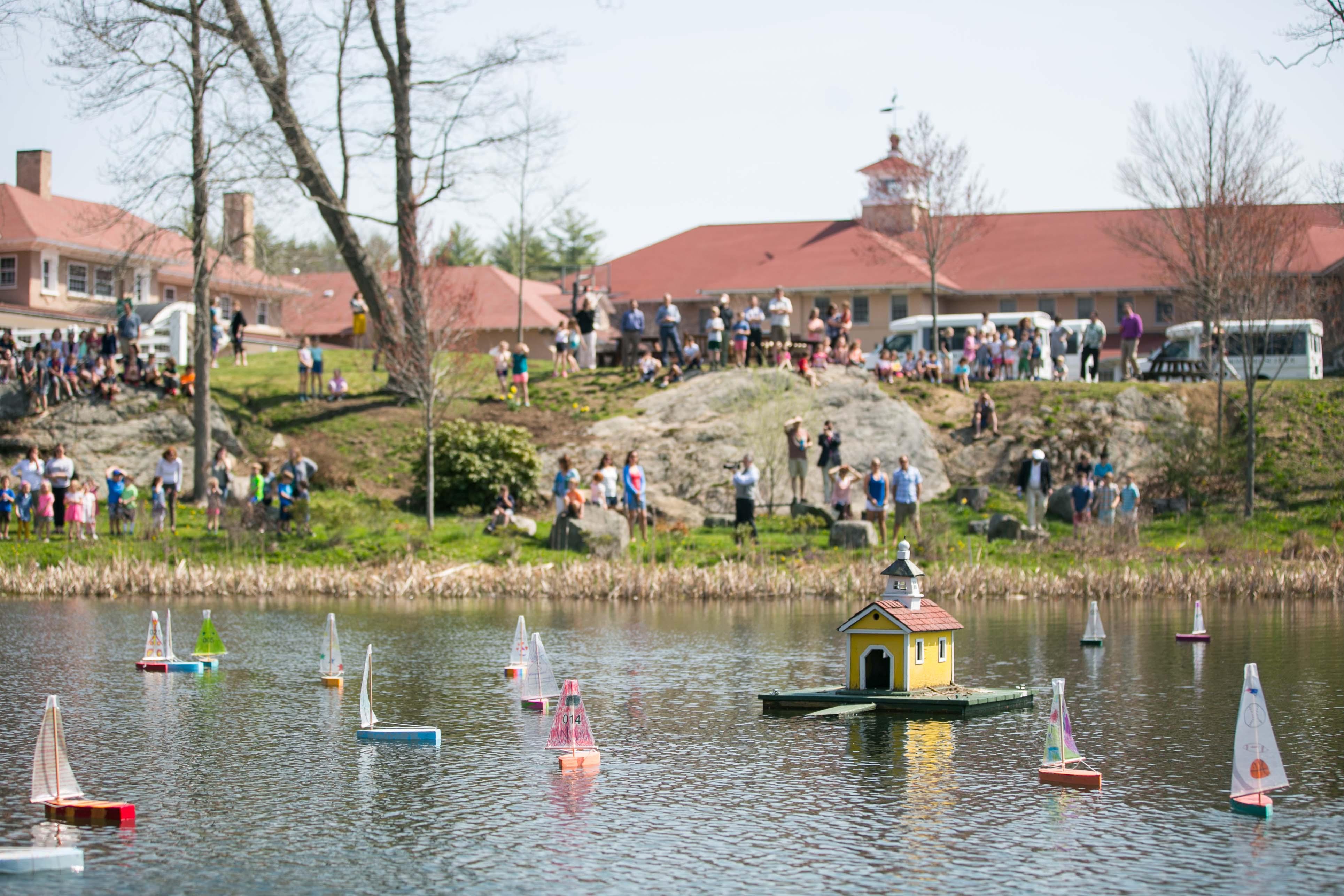
Scope 1 emissions - direct Greenhouse gas (GHG) emissions from sources owned by an organization, such as the emissions from Brookwood’s gas-burning boiler used to heat the school and the internal combustion engines of the school’s buslets
Scope 2 emissions - indirect GHG emissions from the generation of purchased electricity, such as the natural gas burned by National Grid to generate electricity that the school purchases.
Scope 3 emissions - all indirect emissions (not including scope 2) that occur in the value chain of the organization. This includes emissions from transportation for faculty and staff to get to school and the emissions associated with production of the books and supplies used by the school, among many other sources.
ESG investing - considering material environmental, social, and governance (ESG) factors in the investment process to better identify risks and opportunities to enhance the financial performance of investments.
Environmental Justice - the fair treatment and meaningful involvement of all people regardless of race, color, national origin, or income with respect to the development, implementation and enforcement of environmental laws, regulations and policies. Fair treatment means no group of people should bear a disproportionate share of the negative environmental consequences resulting from industrial, governmental and commercial operations or policies (From the US EPA) For more information on environmental justice and environmental racism, see https://www nrdc org/stories/environmental-justice-movement
This list provides a sense of how sustainability and climate change is already embedded in the Brookwood curriculum Our curriculum is ever-changed and evolving This is one snapshot in time
Within the lower school curriculum, we develop an appreciation and love for the outdoors and an understanding of the natural systems in our community and how to protect them
We explicitly teach: what our local birds and insects eat and how to meet their needs, sustain/enhance their habitat decomposers and how composting works where our favorite foods come from, how they are grown, harvested, packaged, and distributed composting and recycling In the past, the EC classes have grown food in the outdoor classroom that was for donated to Backyard Growers. We'd like to do that again this year.
We actively practice: using reusable water bottles recycling along manchesters guidelines composting our food waste, worm composting and using compost tea for plants trash clean ups on our walks
We could do better at: recycling....students do a good job recycling paper, but not as good at sorting the other items educating families about the use of plastic bags and the consumption of food "pouches" (ie. yogurt and applesauce, etc) and how to continue sustainability practices at home
Kindergarten
We explicitly teach:
wants versus needs
local environment. trees, water supply/route on campus paper usage and recycling /conserving what goes into compost vs trash vs recycling growing food to eat as part of our unit on food insecurity
We actively practice:
recycling paper and reusing packaging like cardboard or plastic containers in our "creation station" so that kids can incorporate them into their creative projects
lights off when out of the room compost food scraps using reusable plastic plates vs paper towels for snack using plastic cups that can be reused when students forget water bottles capping our markers until we hear them "click" so that we can avoid masses of dried up markers
putting limits on paper usage, such as only using scrap paper in the creation station
We could do better at: being more intentional and explicit in explaining why we do some of the things we do (lights off, composting, reusable dishes cups etc.)
recycling the plastic that comes in kids’ snacks using less paper towels and using less copy paper
Grade 1
We explicitly teach:
Composting: to encourage proper disposal of lunch waste, we created and recently updated the shadowboxes above the trash/recycling/compost bins in the Liston Commons.
Food waste: to support Ben Wildrick’s science unit on decomposers, we followed the flow of waste from classroom and cafeteria to Brookwood’s end receptacles for trash, recycling, compost, and cardboard/paper recycling
Composting, including a field to Brick Ends Farm
Reading children's books that focus on themes of sustainability (The Curious Gardener, The Water Protectors Here We Are, The Watcher, We Dream of a World )
We learn about Jane Goodall and other leaders of environmental agency Talk about practices in other places around the world. For example, some people do not have hot showers or flush the toilet after each use, and how in other cultures toys and dolls are sometimes made out of recycled materials, such as bottle cap checkers in Rwanda. water conservation and making sure to turn off the faucet. turning the lights off when everyone leaves the classroom.
We actively practice:
Paper/cardboard recycling. The kids use a lot of recycled materials from the classroom Imagination Lab for curricular models, projects and displays. It is a student’s job to empty our three recycling bins at the end of each day. Composting our leftover snacks, fruit peels and cores. They go into our classroom compost bucket. It is a student’s job to empty the compost bucket into the lunchroom compost bin at the beginning of lunch.
Washing our hands in our classroom before lunch with a 20-second timer. The students wet their hands, turn the water off, and then turn it back on when they’re ready to rinse.
We could do better at: composting using less single use paper in the classroom maintaining the classroom garden space
Grade 2
We explicitly teach:
Our Social Studies focus in second grade is on Indigenous Peoples and one of the themes that comes up in research is how these people groups cared for the earth and used their resources wisely and efficiently
Tinker Time, using materials that would usually be thrown away to create Composting (esp. as it relates to our chickens) and recycling
We actively practice:
using reusable rags to wipe tables instead of paper towels composting our leftover snacks
washing and recycling plastics recycling paper having a reusable water bottle. classroom jobs to dump compost and recycling bins (paper and plastic) only observing nature at recess, not touching or moving nature classroom job to turn off the lights and close the door when we leave the classroom
Our Tinker Time (soft tech/engineering time) uses all recyclables from the classroom/school community and students are encouraged to bring in their recyclables from home to use in building projects giving fruit and veg compost from the kitchen (and from our snacks) to our chickens growing herbs in our outdoor classroom that are used in the chicken coop (as odor absorbers/sanitizers) or the chickens can eat.
We could do better at:
Reducing paper waste
Reducing food waste at lunch
A lot of my kids are talking about Global Warming…maybe have an expert come in and we can teach the school about what we can do at Brookwood to help
Grade 3
We explicitly teach and we actively practice:
West Beach clean up. Students pick up and catalog all the trash they collect. Results are shared in a global database. Analysis reveals most of the trash is plastic. Study how plastics are made and alternatives to plastic. composting - we use the small composting bucket and empty it daily recycling and reusing backs of blank paper for free drawing bird feeding in the winter - we have feeders outside that we refill.
We could do better at:
reducing paper usage modeling recycling that isn't paper recycling having a sustainability "tip" in our newsletter about things that are in parent control, like reusable containers having observed our outdoor classroom and planned for a pollinator garden in the spring (which I can still do!)
Grade 4
We explicitly teach:
Natural capital value of intact wetlands How coastal wetlands protect us from storm surges Areas with degraded wetlands suffer more damage composting in the lunchroom recycling (and separately out paper from plastic) as 4th grade leaders, look out for and pick up trash off the playground/campus
We actively practice:
recycling paper, plastics and markers using both sides of pieces of paper having a scrap paper bin to use when kids don't need a whole sheet of paper, etc.
cutting out a small piece of paper and covering up errors on a final poster instead of re-doing it
sorting trash, recycling and composting from our trays at the end of lunch
We could do better at: composting our snack remains having more of a connection with an outdoor space on campus of which we are in charge, where we could plant
Our upper school curriculum takes a deeper dive on specific topic areas, such as food security and climate change, and engages in field work and analysis in our local ecosystems.
We explicitly teach/actively practice:
Food Insecurity Unit
It starts with understanding systemic oppression
Moves into Wealth Distribution in the United States
Food Insecurity -- within that healthy food and who has access and why
The culmination is a food drive
Water Cycle
Water as a resource
Water Chemistry Testing
How to protect freshwater
Climate Justice as it pertains to Jackson, MS water crisis
Ecosystem Health
Impact of Disruptions in an ecosystem
Partnering with Trustees of Reservations
Long Hill Reservation: Action research on vernal ponds and the effects of climate change on inland forest hiking trails
Study of overwintering birds in salt marsh across from Dan Wise Way
Long Term Climate Research at the salt marsh
Long term study and data collection on stream bank erosion due to elevations in sea level and storm intensity 1 one-hour class per month collecting data, another 45 minute class analyzing and processing the numbers, including adding them to a database
Tracking bank erosion, temperature of water and soil
Tides
Recycling
Climate Change Unit
Weather and climate; discussion of climate change in technical terms
Greenhouse gasses
Exploration of policies that are currently in place in the US and other countries to combat the effects of climate change
Variables that affect climate change
Climate change current events and activists, what we are doing to slow carbon pollution
Climate Change Symposium Project: students create a proposal to lower the world’s temperature using a climate change simulator created by MIT
Renewable energy sources & impact on the environment
Reusing cardboard/plastic bottles for design projects
Recycling
Summer reading assignment focused on the interconnectedness of creatures on earth
Incorporating nature writing into the 8th grade curriculum
Altered books project (art)
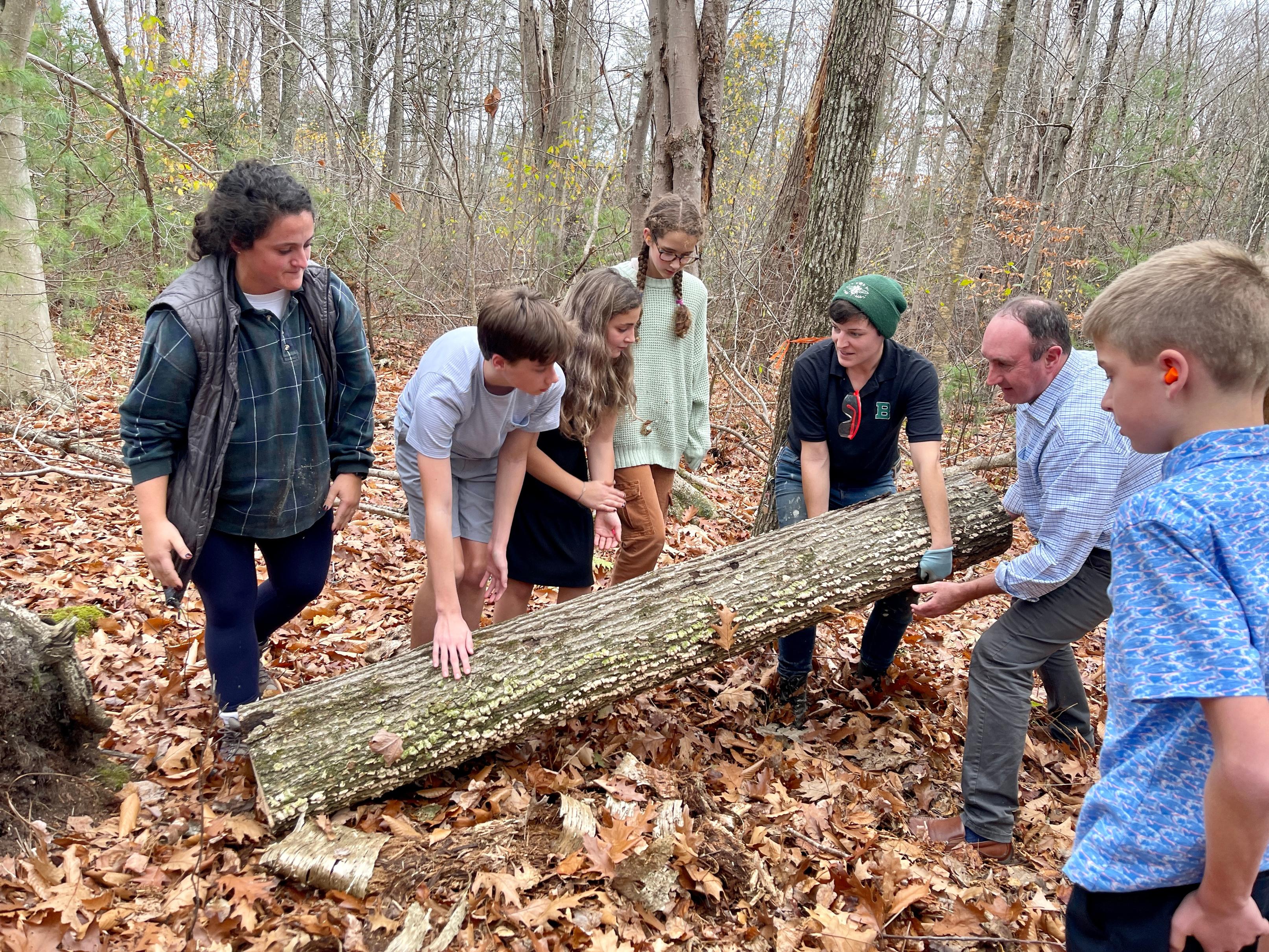
As part of Brookwood’s ongoing sustainability efforts, we are aiming to plan events that create Zero Waste. Zero Waste events help to reduce the amount of waste generated by the School, sets a positive example to our community, and demonstrates our commitment to sustainability.
Zero waste is a philosophy and design principle that aims to reduce waste and minimize the amount of materials that are sent to landfills or incinerators It promotes the redesign of resource life cycles so that all products are reused
The ultimate goal is to eliminate waste by creating a circular system where materials are kept in use for as long as possible Zero waste emphasizes reducing consumption, designing products for durability and recyclability, and creating systems for composting and recycling
Because our compost is used by farms and landscapers, the quality of the materials that we send to composting facilities is very important There are a few steps you can take to ensure that contamination of event compost bags does not occur Composting is easy, but clear communication to event participants about what can and cannot be composted is critical

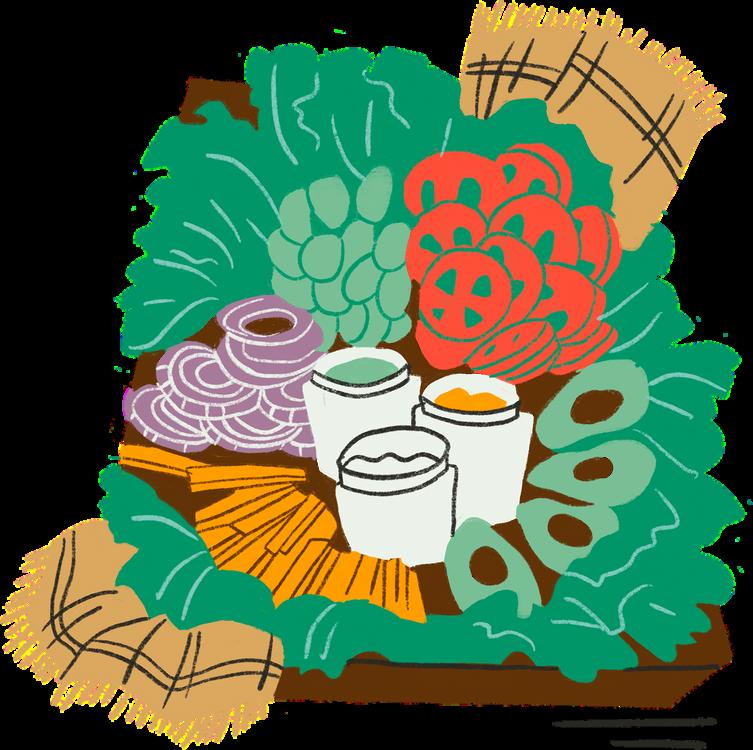
1. Determine all food and serving products you will need, such as food, drinks, cups, plates, bowls, utensils, tablecloths, and centerpieces. Make sure all are recyclable, compostable, or reusable.
2. It’s best if all plastic looking products are compostable (especially beer & wine cups) to avoid confusion.
3. Tell the caterer that you do not want any single-serve packets–they are usually not recyclable or compostable (i.e. sugar, ketchup, butter in foil) or non-compostable materials (ie plastic coffee stirrers, tea in foil bags, small creamers, ice cream wrappers, sandwiches wrapped in plastic or in plastic lunch bags, etc) that can contaminate the compost & recycling
4 Request “Biodegradable Products Institute (BPI) certified” compostable materials from your caterer or order some from OfficeMax or EcoProducts
1. Borrow compost and recycling bins from Brookwood’s Facility Team. It is recommended to have a small number of stations (four stations per 200 people) and only a small trash bin for any trash that shows up (similar in size to your desk-side bin)
2 Borrow compostable bags from the Brookwood Facilities Team
3 Use tailored recycling/compost signs and table tents Connect with the Communications Team to ensure you have all the signage you need
4 Make sure compost will be taken to the compost dumpster the next day Schedule with the Brookwood Facilities Team
5 Be sure to recruit volunteers that can monitor bins and bring compost and recycling to the appropriate area at the end of the event.

1. Set out specific collection bins for recycling, composting, and trash. Put out signage. Taping actual objects to the bins is VERY helpful.
2. Check for any non-compostable materials brought by the caterer, as they often make mistakes.
3. Most importantly, staff the waste stations to ensure that compost is not contaminated.
4. Train custodians, servers, bartenders, and volunteers.
5 Make a brief announcement about event composting (remind attendees that contamination is harmful to those who use our compost and remind them what can be composted)
What CAN be composted?
a ALL food waste (including grains, breads, meat, dairy, fruits, vegetables, tea bags, and coffee grinds)
b. napkins & paper towels
c. compostable plates, bowls, cups, and utensils
d wooden coffee stirrers
e tea bags (staples are ok) and coffee grinds
f. the green compostable bags that line the compost bins
What CANNOT be composted?
a plastics
b metal
c coffee lids
d. sugar packets (these are lined with plastic coating)
e. plastic ketchup or similar dressing and sauce packets
f styrofoam cups
g plastic bags
h foil or plastic bags that individually wrapped tea bags come in If you’re not sure– trash it!

MAKE SURE THAT THE COMPOSTABLE ITEMS ARE BIODEGRADABLE PRODUCTS INSTITUTE CERTIFIED
OFFICEMAX: OFFICEMAX SELLS COMPOSTABLE PRODUCTS
UTENSILS ARE 6 CENTS EACH, PLATES, BOWLS, & CUPS ARE 8-15 CENTS EACH. SHIPPING IS FREE.
ECO-PRODUCTS: ECO-PRODUCTS SELLS COMPOSTABLE PRODUCTS:
UTENSILS ARE 5 CENTS EACH, PLATES, BOWLS, & CUPS ARE 6-15
CENTS EACH. SHIPPING IS EXTRA (WWW.ECOPRODUCTS.COM).
Compostable
DURKIN COMPANY, EDDIE SULLIVAN (ES0231@COMCAST.NET)
BIOBAG, TOM GOLDY (TOM@BIOBAGUSACOM)
XPEDX, BILL FAY (WILLIAMFAY@IPAPERCOM)

